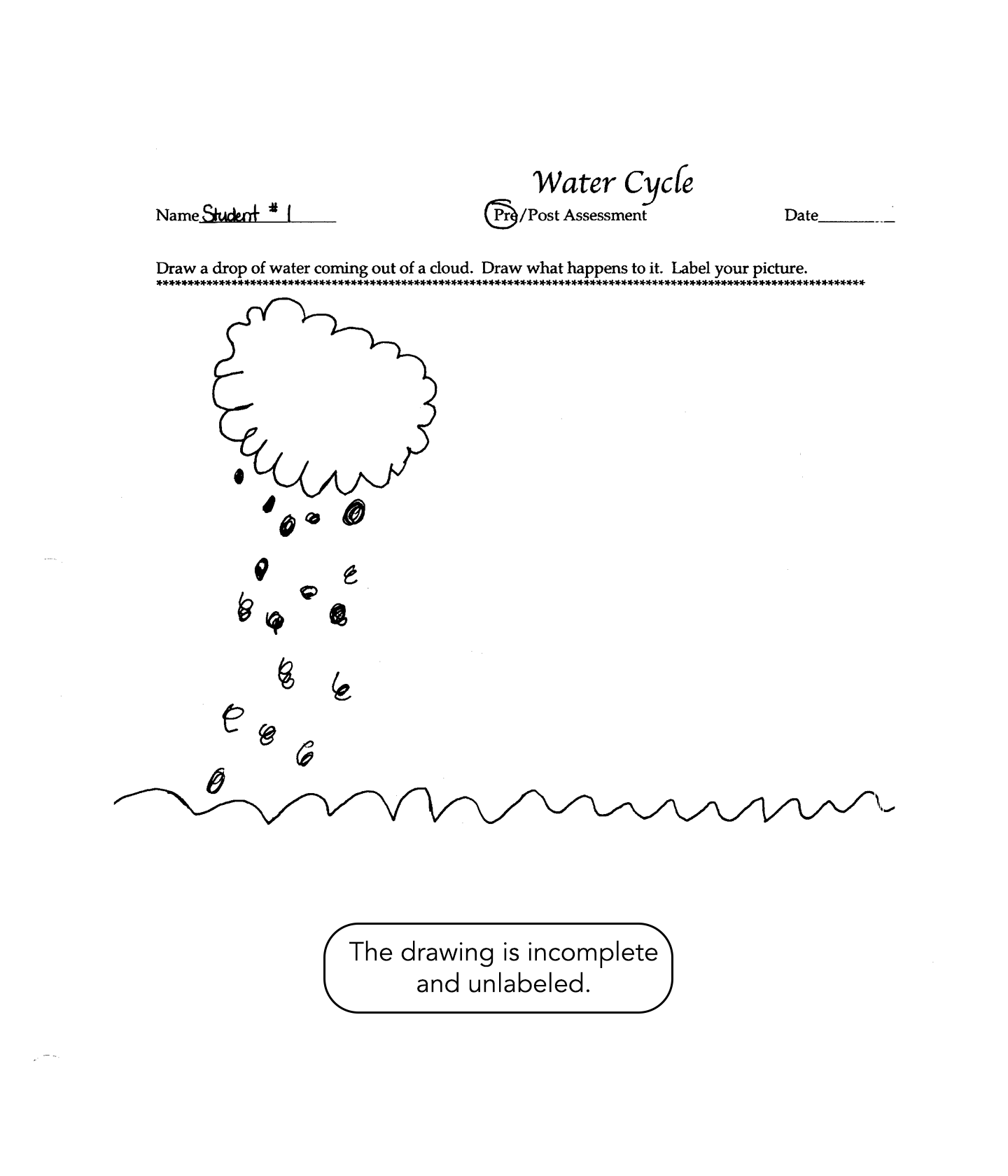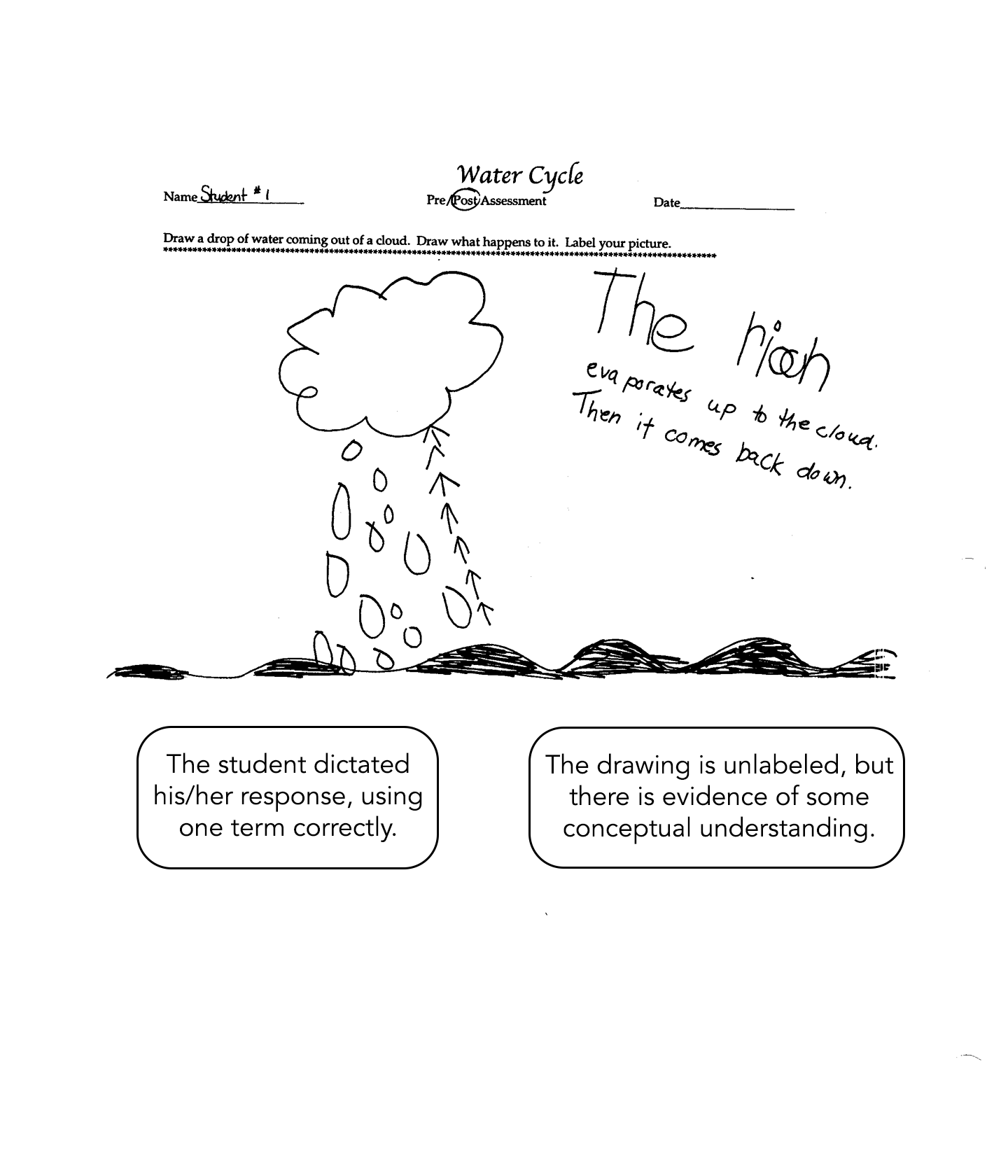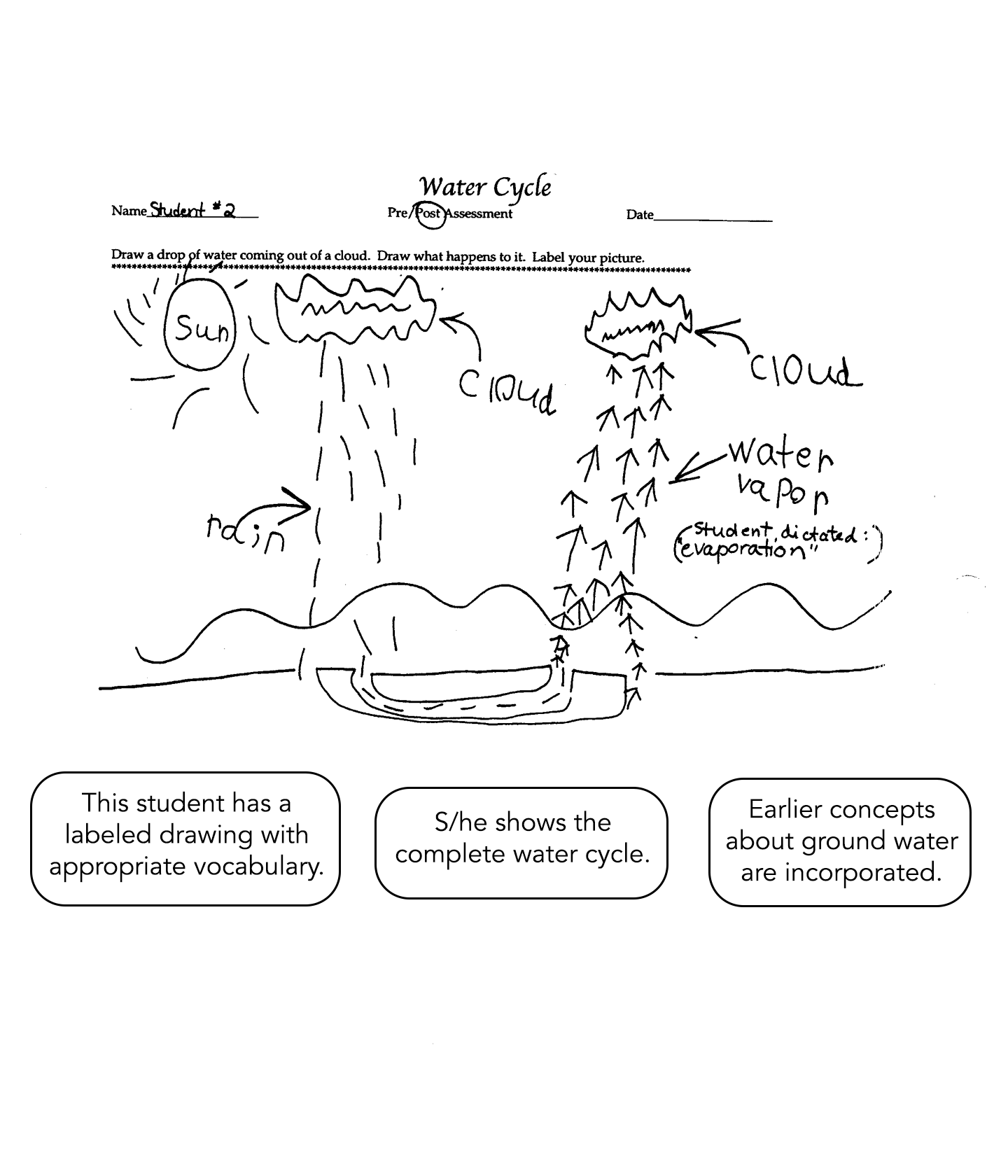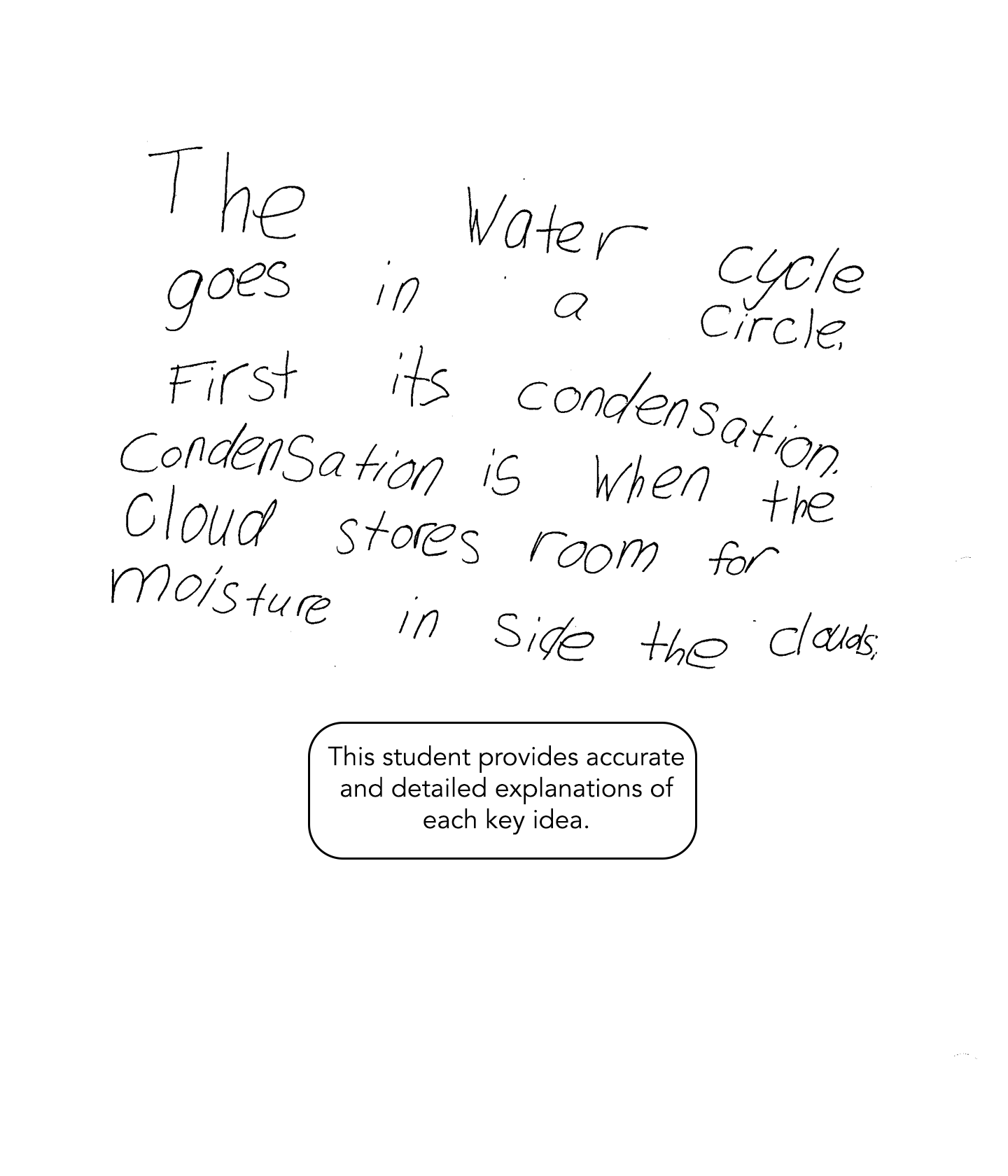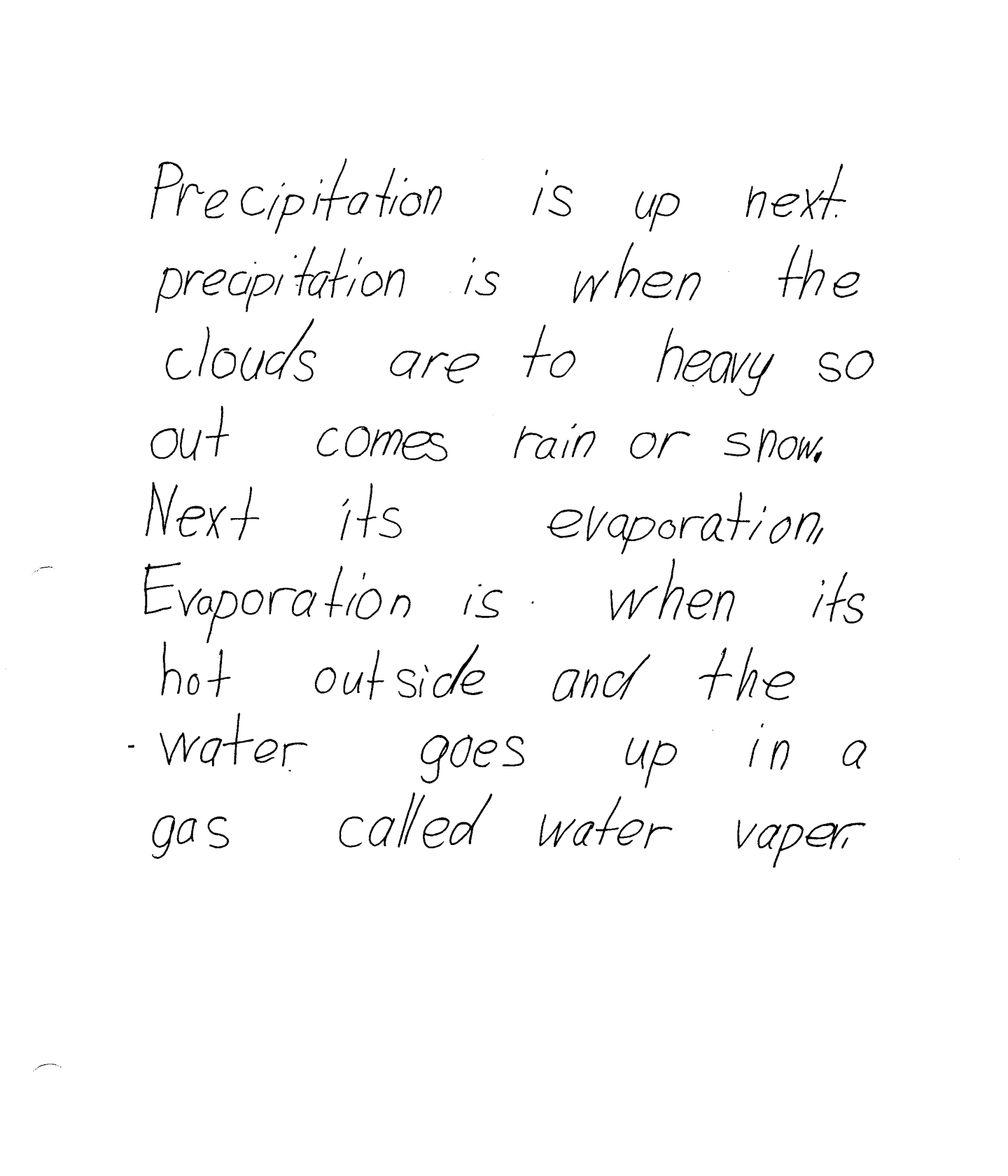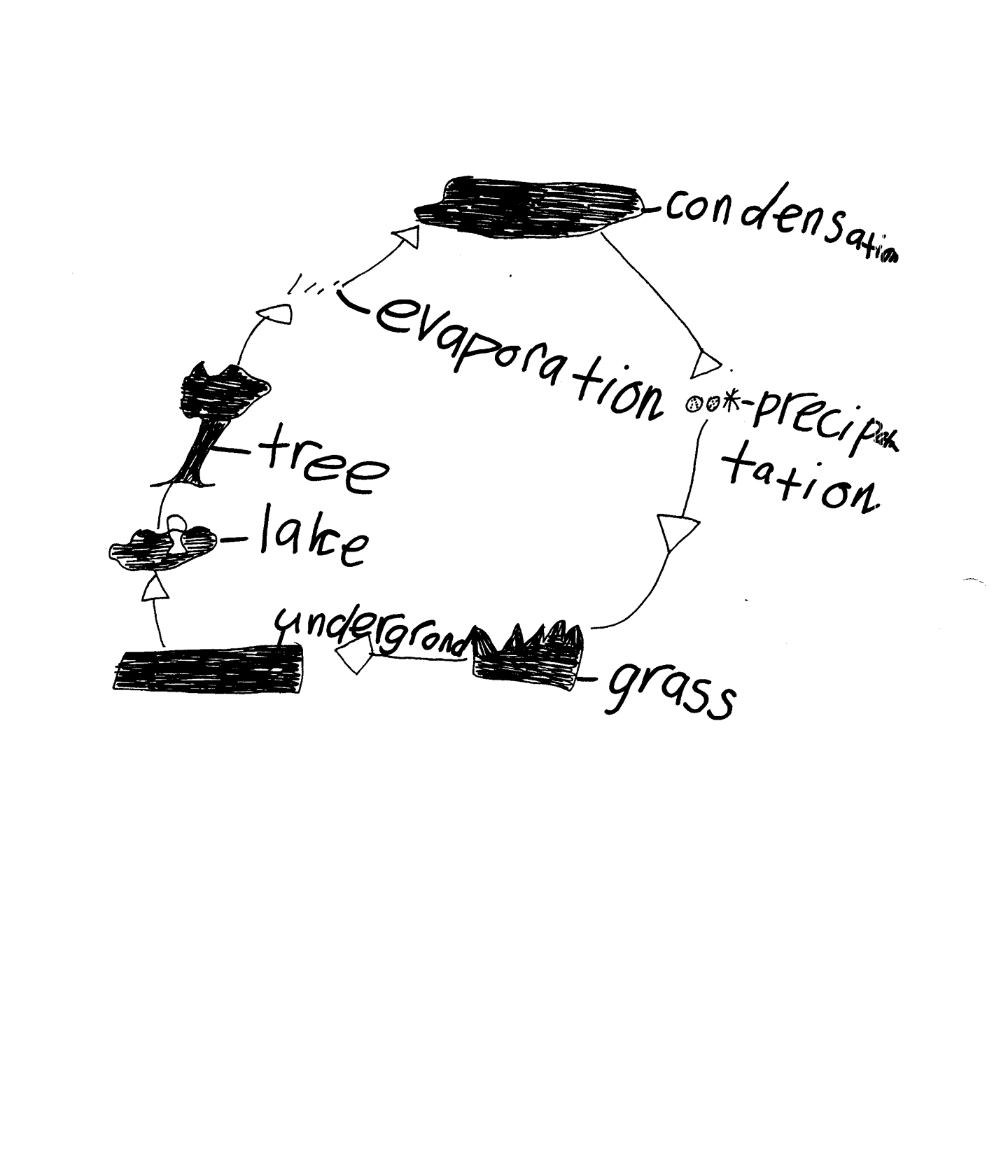Where Does a Drop of Rain Go?
We will be learning how rain is made in nature and where the raindrops go after they fall out of the sky. First, you will draw and write what you know and think about these things. At the end of our unit, I will ask you to do this again to see how much more you have learned about what makes rain and where it goes.
Two 20-minute class sessions, about two weeks apart, for pre- and postassessments.
Instructional Support Downloads
Task Write Up
- Cause and effect
- Systems, order and organization
- Populations and ecosystems
- Properties and changes of properties in matter
- Transfer of energy
- Earth in the solar system
- Structure of the earth system
Suggested materials
Students can use plain paper or a prepared worksheet for describing the water cycle.
First and second graders in our classes were introduced to a unit on the water cycle, beginning with a preassessment to see what they already knew. From that activity, we confirmed or introduced students to some of the associated science vocabulary.
The purpose of this assessment was to determine how much conceptual growth we could measure from preassessment to postassessment. Were students beginning to make connections conceptually? Had they mastered the science vocabulary with the terms we were using?
This task calls upon students to describe and/or accurately draw and label their explanations about how rain forms and where it goes. It allows the teacher the opportunity to check for conceptual understanding and connections being made throughout the unit of study. By encouraging students to use science vocabulary to explain events, science literacy is also being developed.
Students were instructed to complete a labeled drawing of a drop of rain coming out of a cloud and show what happens to it after that.
Science
Other water investigations in the unit included dissolving things in water, observing water as an agent of erosion, making it rain indoors, evaporation investigations, and soil investigations in which students observed how easily water passes through or is held by different soil types.
Make water molecules using three sections of an egg carton for each student. Paint two sections with one color and mark them "hydrogen." Paint the remaining section a different color and mark it "oxygen." Connect the three sections together. Mount all of the class molecules inside a giant drop of water (cut large paper in the shape of a drop of water). This helps children conceptualize that there are many molecules of water inside a single drop of water, and when the drop of water evaporates, the molecules move apart from one another to form a gas.
Language Arts
Students can write acrostic poetry and illustrate it with watercolors, using aspects of the water cycle with the key word written vertically down the page.
Movement/Music
As an introduction to this unit of study, all of our grades-one and -two students (200+) gathered in the gymnasium to simulate the water cycle. They listened to environmental music and sounds while pretending to be water falling as gentle rain, collecting in rivers and lakes, evaporating to form clouds and becoming snowfall when the temperature dropped. (For example, they climbed up the cargo nets to simulate evaporation.) Have students simulate different types of clouds forming as conditions are described to them. (For example, when very hot air rises quickly and hits very cold air.)
Open-ended questions that can guide students’ thinking and build their understanding include:
- What are the water molecules doing when they are in a cloud? How do water drops form in a cloud?
- How are they moving when they come out? Where do they go?
- How is water vapor different from water? How are they the same? (physical changes)
- In which direction does precipitation move?
- Where does water go when it hits the ground?
- In which direction does evaporating water move?
- What makes a cloud form? What can you tell me about the temperature? What happens when a cloud gets warmer? colder?
- Where does the earth get the heat energy to make water molecules move? How does that energy get to the earth?
- Where do you get the energy that moves or heats your body?
(Unifying concepts/big ideas and science concepts to be assessed using the Science Exemplars Rubric under the criterion: Science Concepts and Related Content)
Physical Science – Properties of Matter: Students observe the physical properties and characteristics of water as it changes from liquid to gas and back to liquid again. Students use the terms evaporation, vapor, condensation, precipitation and rain appropriately.
Physical Science – Transfer and Transformation of Energy: Students observe that the sun is a major source of energy for changes on the earth.
Life Science – Populations and Ecosystems: Students see that the major source of energy to ecosystems is sunlight.
Earth and Space Science – Earth Structure and System: Students observe that water covers the majority of the earth’s surface and circulates through the atmosphere in what is known as the water cycle.
Earth and Space Science – Solar System: Students see that the sun is the major source of energy for phenomena on the earth’s surface, such as the water cycle.
Scientific Method: Students describe cause-effect relationships with some justification and use observations and prior knowledge. Students observe and explain reactions when variables are controlled (cause and effect).
Exemplars Rubrics
Students should explain, label and/or draw all of the key aspects of the water cycle:
- Raindrops falling from a cloud
- Water flowing to rivers and streams
- Heat causing water on the earth to evaporate and rise
- Clouds formed by cooling air
- Condensation
Key words that students should use are: evaporation, precipitation and condensation (written on the board to assist spelling).
This student’s solution is incomplete and lacking in detail. The drawing is not labeled and is unclear. There is little evidence of conceptual understanding.
This student dictates his/her solution, using one of the vocabulary words appropriately. The drawing is not labeled, but there is some evidence of conceptual understanding of the water cycle. Further questioning would reveal the degree of understanding of the science vocabulary and concepts.
This student’s solution shows a complete cycle and uses terms accurately. The drawing is clearly labeled and the student incorporates his/her earlier understanding of groundwater appropriately – evidence of conceptual understanding.
This student’s solution is complete and accurate. The explanation outlines in detail the three key vocabulary words (precipitation, evaporation, condensation) – evidence of conceptual understanding. The student extends thinking by using other appropriate science vocabulary and includes a diagram showing other aspects of the water cycle (groundwater and how plants use that water).


